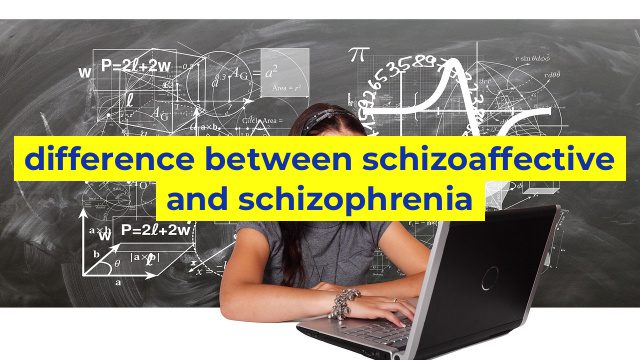Distinguishing Between Schizoaffective and Schizophrenia
Schizoaffective and schizophrenia are two mental disorders that are often confused with each other. Although the two disorders share some similarities in terms of symptoms, there are distinct differences between them. Understanding the key differences between schizoaffective and schizophrenia can help in proper diagnosis and treatment.
What is Schizophrenia?
Schizophrenia is a chronic and severe mental disorder that affects a person’s cognitive functions, behavior, and emotions. The disorder is characterized by symptoms such as hallucinations, delusions, disorganized speech, and disorganized behavior. Individuals with schizophrenia may also experience an absence of emotional expression, a lack of motivation, and problems with memory and attention.
Schizophrenia is usually diagnosed during late adolescence or early adulthood, and it is a lifelong condition. The cause of the disorder is still unknown, although genetics, brain chemistry, and environmental factors can play a role in its development.
What is Schizoaffective Disorder?
Schizoaffective disorder is a mental disorder characterized by both schizophrenia symptoms and mood disorder symptoms. The mood disorder symptoms can include major depressive episodes, manic episodes, or a mix of both. Individuals with schizoaffective disorder may experience hallucinations, delusions, and disorganized speech, similar to those with schizophrenia.
The key difference between schizoaffective disorder and schizophrenia is the presence of a mood disorder. The mood disorder symptoms can be present concurrently with psychotic symptoms or occur separately. The disorder is usually diagnosed during early adulthood and can be chronic but may also have periods of remission.
Differences Between Schizoaffective and Schizophrenia
The key difference between schizoaffective disorder and schizophrenia is the presence of mood disorder symptoms. Individuals with schizoaffective disorder have mood disorder symptoms, such as depression or mania, in addition to schizophrenia symptoms. In contrast, individuals with schizophrenia do not have mood disorder symptoms.
Another difference is that individuals with schizoaffective disorder tend to have an episodic course, meaning they experience periods of symptom exacerbation and remission. In contrast, individuals with schizophrenia often have a more chronic course, where symptoms persist for longer periods.
Conclusion
Schizophrenia and schizoaffective disorder are two distinct mental disorders with some similarities in symptoms. The key difference between them is the presence of mood disorder symptoms in schizoaffective disorder. Understanding the differences can help in proper diagnosis and treatment, leading to better outcomes for individuals with either disorder. As always, seeking advice and treatment from experts in the field is crucial for managing your mental health.
Table difference between schizoaffective and schizophrenia
| Comparison | Schizoaffective Disorder | Schizophrenia |
|---|---|---|
| Symptoms | Presents with symptoms of both schizophrenia and mood disorders (bipolar or depression) | Presents with symptoms of delusions, hallucinations, disorganized speech and behavior |
| Onset | Most commonly diagnosed in early adulthood, may have abrupt onset | Most commonly diagnosed in late adolescence or early adulthood, may have gradual onset |
| Treatment | Treatment involves both antipsychotic medication and mood stabilizers or antidepressants | Treatment involves antipsychotic medication and therapy |
| Prognosis | Prognosis is generally better than schizophrenia alone, but can still be significant impairment in daily functioning | Prognosis can vary and may be dependent on early diagnosis and treatment. Can cause significant impairment in daily functioning |


